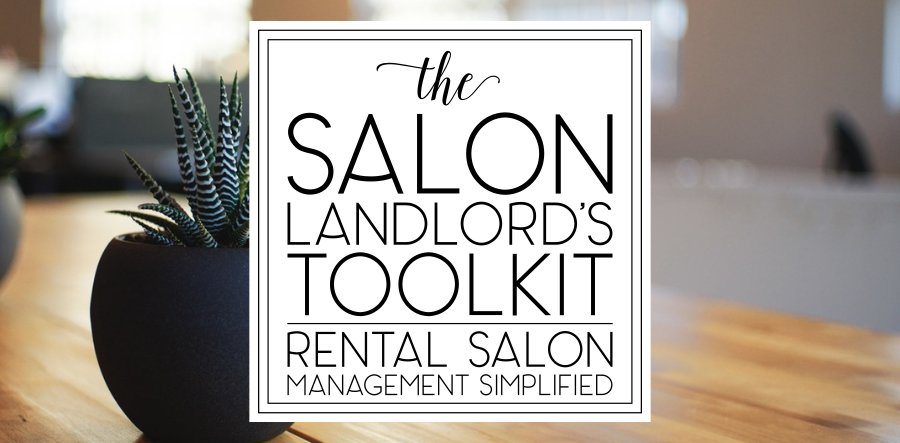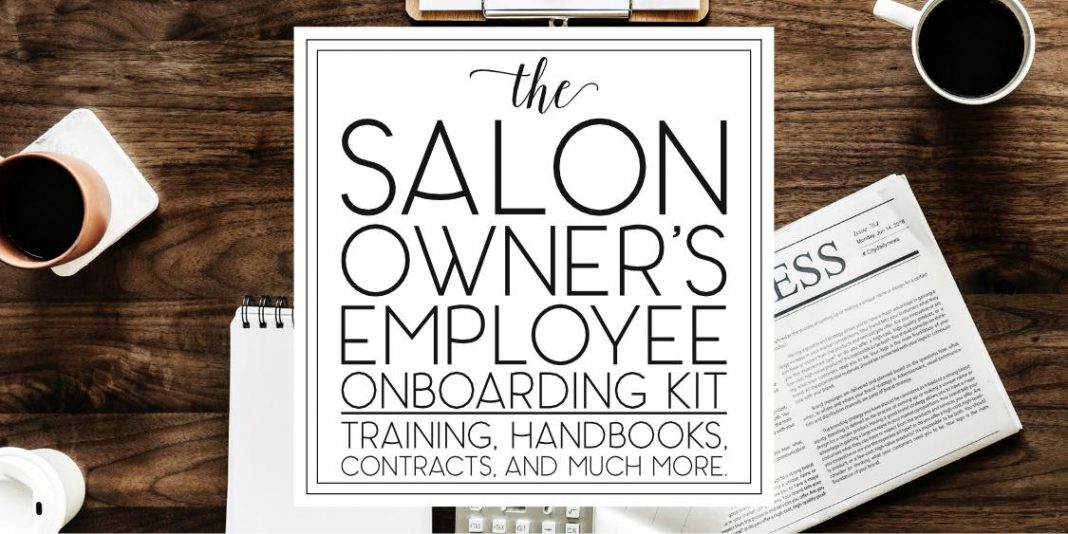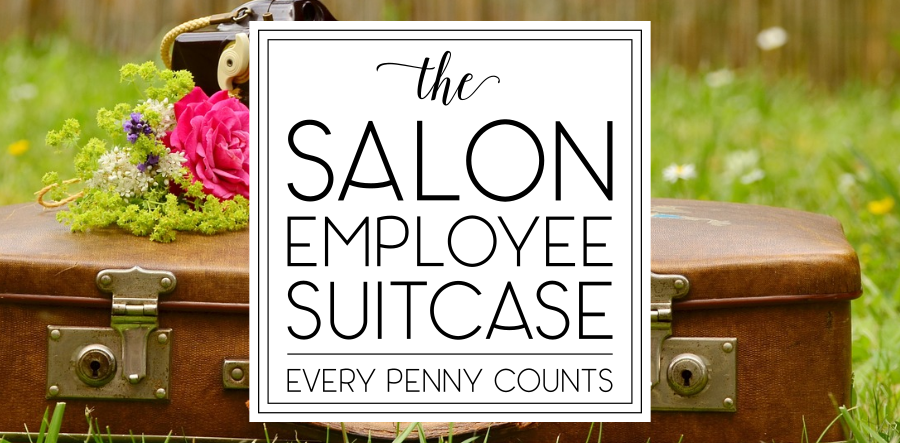Somewhere along the line, someone in our business made a big mistake and everyone else followed suit. That mistake was offering high commissions; a compensation system that is significantly flawed for multiple reasons. It does not work in anyone’s favor, least of all the salon itself.
The main problem with this system? Salon owners have given their employees the belief that they should be making just as much (if not more) than the business itself on each service.
Can you think of any other industry that operates that way? Because I can’t.
Employees, please understand that salon owners are not in this business to break even. The became salon owners to make a profit which can then be re-invested into the business or put aside to support you and your coworkers through those rough spots we all have to struggle through. If they’re smart, they’re also setting aside a chunk for themselves to retire on because business owners don’t get 401Ks unless they establish them on their own.
As an industry, we need to make changes to our compensation models so that we can all benefit in the long-term.
The best way to do this would be to follow the examples set for us by other businesses and by the Department of Labor. If you require convincing, I have identified several problems with our current structures and policies.
A commission split works for nobody when you do the math. Industry standard right now is this: stylists make nothing unless they perform a service. When they perform a service, they are handed a large chunk of money from that service (generally 50%). This core problem leads to a bunch of other problems.
Commission-only salon professionals are expected to sit in the salon and wait for business. Salon staff are unhappy because they’re expected to sit in the salon and wait for business without compensation. This current model is illegal if hours aren’t tracked diligently every pay period, so this also puts the owner at risk for labor investigations, IRS audits, and/or civil lawsuits.
Salon owners aren’t making enough money on the split for it to be viable. This leads to them committing other crimes, specifically wage theft, in the form of “head charges,” “product fees,” and misclassifying employees as independent contractors to avoid paying employment tax. Again, this puts the owner at risk for audit and/or civil lawsuits.
Owners will often hire too many professionals. They can afford to do this because if the professionals are not performing services, they believe they do not have to pay them. This is a false belief, since this is typically a violation to the FLSA in addition to applicable state laws. Again, this has the potential to lead to costly audits and/or civil lawsuits. It is also inconsiderate, disrespectful, and completely ridiculous to expect experienced, licensed professionals to sit in your business for hours on end without compensation for their time.
Professionals who are not making money have no incentive to work for the business. Salon owners who believe they are not required to pay their professionals hourly also have no incentive to ensure the business is busy. If the owner were paying hourly for the time of their employees, they would be forced to hire fewer of them and divert more money into marketing strategies to keep those hourly employees busy.
Salon professionals are at the mercy of their employer’s whims with regards to promotional pricing. If the owner chooses to discount a service or run a Groupon, employees are expected to honor it. Because salon professionals are commission-based, this equates to a pay cut for the duration of the promotion.
Professionals who are forced to take a pay cut under the guise of an attempt to “build the business” are unhappy employees.
Salon owners should be making up the difference for promotional pricing, yet hardly any of them do. Again, this is directly related to the first problem–commission works for nobody in the end.
Wouldn’t it be better if we could design a system that guarantees long-term employee and employer satisfaction? A system that doesn’t devalue our experience as professionals and reward poor business management?
The Salon Compensation and Pricing Megakit calculates salon compensation and service pricing for you! It includes:
- The Salon Compensation and Pricing Calculator, an 8-page spreadsheet system that makes salon compensation and pricing calculation as simple as data entry. The best part? The system is enabled with protections to make it impossible to “break” the formulas!
- The Salon Compensation and Pricing Guide, a 44-page instruction manual that not only explains how to use the system but also explains every formula so you’re never confused about what the numbers mean or where they came from.
- A 9-page Employer Obligations Information Sheet to keep you from making very common life-destroying mistakes.
- Be Worth What You Charge, an 11-page checklist and salon evaluation resource.
$89.99Add to cart
I often hear salon owners complain that they can’t find or retain quality talent.
How can anyone expect to attract or retain anyone when they aren’t compensating their employees or managing their business?
Let’s evaluate an alternative compensation method: hourly plus commission bonuses. With this method, owners pay their professionals an hourly rate and give them commission on services and retail sales based on whether or not the stylists hit their performance goals.
There is no standard formula for this compensation method, no one-size-fits-all here. These are figures that you will have to work through yourself. Both the goals and commission rates will differ in each department just as your service prices do. (My Compensation and Pricing Megakit can automate that math for you.)
By way of an example, employees would be guaranteed a flat hourly rate. They would receive 10% commission on all retail sales. If their service sales meet the first performance threshold, they earn a modest percentage on their gross sales to that point. (“Modest,” by my standards, is 3%.) Should they hit the second performance threshold, the commission on gross sales bumps up a few percentage points (generally 5-7%, depending on the salon’s structure). Should they meet they third threshold, the commission bonus would hit its peak for all sales in that pay period (8-10%–again, depending on the salon’s finances).
Should the employee not hit any of the performance thresholds, we take a look at why the sales were so low and evaluate how to fix the issue. If the employee continuously fails to meet performance standards, we have to reach a decision about whether or not this employee is a good fit for the business. Employers may also choose to calculate a piece-rate amount into each service price that gets forwarded directly to the employee, eliminating tips entirely.
Salon professionals deserve health benefits. They deserve retirement plans. They deserve to be paid for their time and the reassurance of a steady paycheck.
Salon owners deserve to profit. They shouldn’t be held hostage by their professionals. They shouldn’t be faced with committing wage theft and labor crimes to break even in their business.
So, let’s look at how a week looks for one nail technician working full-time at a base rate of $12 an hour.
Lisa works 40 hours a week. Her hourly pay (before taxes) comes to to $480. This pay period, she did $3,760 in service sales and $80 in retail sales. Lisa’s commission on her services is $299.20 (8%) and her commission on retail is $8. Her tips equal $534.80. When totaled, her total income (before taxes) is $1,321.20.
Lisa’s work has contributed $2,518.80 to the salon.
Now let’s compare this same week, but this time we’ll evaluate the numbers under a traditional commission split, with Lisa making no guaranteed hourly wages. Instead, Lisa receives 50% commission on services and 10% on retail.
Lisa does $3,760 in service sales and $80 in retail. Her service commission (at 50%) equals $1,880, her retail commission equals $8, and her tips equal $534.80. Her performance in every way is exactly the same. However, in this scenario, Lisa is being paid $566.80 more than under the hourly plus bonuses system and has contributed only $1,952 to the salon.
Obviously, this split works out for Lisa–but Lisa doesn’t have to cover any portion of the salon’s expenses.
Lisa doesn’t pay the utility bill or provide the product. Lisa doesn’t pay the rent on the building or the CAM fees or cover the costs of advertising or the receptionist that’s making $10 an hour at the front desk. Lisa doesn’t have to make the business loan payments for the build and the equipment. Additionally, Lisa hasn’t assumed a single bit of the risk I’ve taken on as a business owner, but she’s getting the same cut of the profits that I’m getting.
That isn’t chump change, especially for a salon. Depending on how many professionals work in the salon, the losses could come to thousands for the month and hundreds of thousands lost annually. I routinely work these comparison projections for salon owners utilizing existing data and when they see the losses, they’re floored. (Also, they become less shocked at their perpetual struggle to pay the salon’s bills.)
Stylists, nail techs, estheticians, massage therapists–you know I love you and I’m your biggest advocate, but you are operating under a false belief that you deserve to make more money than the business you work in. In no other business is this the case. Look at grocery stores, fast food restaurants, car dealerships, retail stores, hotels–no other employee in any other industry has this delusional expectation.
Professionals deserve to be paid (and paid well) for their time, not just their services.
Professionals, you deserve the reassurance of a steady paycheck. You deserve the same things other employees have available to them, like healthcare, a retirement package, sick days, and paid vacation time. You can’t have any of those things if you’re working on commission. In order for your employer to afford to give you these things, you need to understand that you are an employee. You do not carry the financial burden that your owner does. Here’s a post about why 50% is ridiculous and another about salon economics. Maybe when you’re confronted with the numbers you’ll better understand where your employer is coming from.
It is time to reevaluate our entire structure and consider eliminating “commission only” entirely. Just because this is “the way things have always been done” does not mean that it is right or that it is working for us. It isn’t. Not anymore










19 Responses
As a owner and a stylist I agree with you. This post explains our issues perfectly. I think this is why so many salons go out of business so soon. 🙁 Owners can’t keep a business going when they hand out that much money and a lot of stylists don’t perform as well as Lisa every week. I would rather have a guaranteed paycheck and take a lower commission too. Adding the tips automatically is a really good idea. I also think you should have mentioned that Lisa’s tips would have been less if that charge wasn’t being added. Not all clients tip 18%. Some only tip 3 or 5 dollars per service.
You’re right! I should have added that! Lisa’s tip total in the second scenario does assume that she is making 18% per service, so that is an overestimation since some clients might not tip that much (or at all).
I agree with you about salons going under prematurely. It comes down to bad business planning. 50% is just a really risky compensation model. I sure as hell wouldn’t do it. After taxes, overhead, and product…you’re hardly netting anything. Because you’re not making enough profit, you really can’t offer your employees things like insurance or paid time off, and that’s crappy.
I live in Atlanta and as in colorist which is my passion I lost a lots my Clint as in salon been closed on me Iam doing hair for 30 years my old owner she asked me for help as her salon needs as my experience and she know my knowledge she hired as 50% but as month past she start give me 48% and now she is given me 45% so many days I just go to work no Clint and she hired more stylist and Iam straggling no vaction pay or have ingredients health inc
I am not happy as how she changed my percentage Pls let me know what is my options
Hi Roya! First, her decision to lower your rate of pay without informing you prior to the work being performed is actually illegal. You’re also required to be paid at least the prevailing minimum wage, which you seem not to be. You might want to consider filing a complaint against her with the federal Department of Labor, or consider contacting an employee rights attorney in your area.
Hi Tina,
Currently I am in a salon based out of South FL. We run on a commission split only. Stylist 40% , Salon 60%. I feel it can be difficult as the salon does not have any incentive to work hard or grow. Fridays and Saturdays are always busy, but through out the week, not many stylists want to work. Because it can lead to a bunch of sitting around for nothing. And they will sit around. In a salon with 13 available chairs, Sunday – Wednesday we have 3 chairs occupied with no assistants to allow double bookings. I know we cannot be making the money needed to make a profit for anyone. Any tips or suggestions to getting stylist more motivated or is the commission split killing us all?
The commission split really is killing us all, largely because of the issues you’ve just listed. There’s no incentive for stylists to work if they’re not being paid. When I help salon owners with turnaround projects, the most common problem I find when I receive the same complaint is that they’re overstaffing and under-promoting, in addition to paying high percentages of gross sales in payroll. That system causes all kinds of other problems–lack of motivation and higher levels of conflict and employee resentment being the two big ones. The only way I’ve found to reverse those issues is to implement the hourly + commission system, which requires all involved (especially salon management) to do their respective jobs.
I currently work in a salon in CA. I like where I am it’s pretty drama free and the owner is nice. I am getting 55% commission split. I am labeled as self employed idependant contractor. I am also supplying all of my own supplies including the furniture necessary to perform business. I make my own schedule within business hours. Is this legal? I am thinking of going out on my own maybe a small studio? To have to supply my own supplies on commission is killing me and making it almost impossible to keep up with continuing education. Do you have any advice for me?
Yikes. The commission split in lieu of actual rent is a terrible idea. (Five out of six IRS revenue rulings determined the salon landlords who received a percentage of gross sales in lieu of rent were actually employees and assessed back wages and penalties to the salon landlords.) Not only is it a terrible idea, it’s not advantageous for you. Once you pay your federal self-employment tax (15.3% of your income) and your state self-employment tax (here’s an article about that for those in California who are self-employed), that evaporates. Then you have supplies on top of that.
My advice is this: first, make sure you’re actually self-employed. 99% of salon owners don’t know how to use the classification and are doing things wrong (to your extreme disadvantage). Next, consider renting somewhere with a flat rate, or finding employment somewhere that does things legally (paying you an hourly rate plus a piece-rate for the services you perform–it’s the only legal way to compensate stylists in CA aside from paying a flat hourly rate).
I’m a stylist in California and I get paid comission only and I get a 1099. Is this ok? The owner says that once I have the experience and retention (6-12 months) I’m going to get hourly plus commission and a W-2.
LOL. No, that’s definitely not right, especially in California. You should read this post, and this post. Then maybe read this one too.
Seriously. California is literally the very worst state to misclassify in. She can’t make your employment contingent like that. That isn’t how employment classification works.
Hi, Tina… I can’t thank you enough for this article! I’m a new spa owner located in St. Louis, MO. I’ve only been open for a year + but it hasn’t taken me long to realize that my 50% Commission-Only payment system isn’t working well for the overall health of my business. I’m looking to change this and I think that your formula would be just the thing. My biggest issue is how do I go about implementing this change with staff members that have been with me for a while? I will be hiring new people soon and they would start with this. I’m sure that I’ll have no issues there. But how would you suggest I go about presenting this change to those who have worked for me for a while? We have contractual agreements and I truly want to make sure that everyone still feels happy to come to work!… Thanks so much and I look forward to your response…
I recommend three things:
1.) be honest,
2.) be transparent (even if it’s scary), and
3.) be positive (as much as possible).
I’ve had to have these conversations a lot, and there’s nothing scarier than telling a room full of employees you value and don’t want to lose that you made a mistake and need to reduce their pay. There’s no easy way to do it, but it has to be done, so prepare in advance for people to leave (because some likely will).
Start off by telling them how much you value them and their work. Then, let them know that you made a mistake. You wanted to be generous, but the compensation system isn’t working out. At 50%, it’s hard to make ends meet. It’s even harder to secure benefits or grow the business. You can’t invest in their education, jump on new technologies and techniques that could give them and the spa a competitive edge, and your ability to advertise is hamstrung, making it harder to draw in clients and keep everyone busy.
Tell them you want to do more for them. You want to be able to give them access to affordable company health care plans, continuing education, paid time off, and other benefits most people in our industry never have the luxury of enjoying. They deserve the security that comes with a steady paycheck and a retirement savings. You deserve to see a profit for all your time and effort as well.
Tell them you plan to meet with each of them one-on-one to answer their questions and that by no means are you kicking them out immediately. If they want to work elsewhere, they’re welcome to stay until the switch occurs and you’ll happily serve as a reference for them–but the change IS happening and it IS NOT up for debate or negotiation.
If the compensation system is causing the salon to lose money, don’t be afraid to show them that. Every salon has one mouthy professional who has never been in a salon owner’s shoes but thinks she knows it all. If you anticipate that kind of reaction, you can either make it clear that you’re delivering an announcement and not holding a debate session, or you can slap your financials on the table and literally force them to stand where you’re standing. Ask them what they would do in your position. Compensation, by far, is the largest expense a salon owner incurs. When you’ve done everything you can to keep operational overhead to a minimum, there’s nowhere else to make cuts.
Personally, I’m not afraid to let employees know they aren’t worth 50% of gross sales. Even as owners, the vast majority of us aren’t earning 50% of gross sales. (Like I said in the post–they’ve invested nothing. They have no right to feel as if they deserve 50% of the salon’s income, especially since they aren’t paying any of the salon’s bills.)
The salon’s needs come first–everything else comes after. That’s the facts. If they would rather see your salon fail than be paid more appropriately for their positions and their performance, they aren’t employees you want anyway.
Hi Tina!! You’re guides have been so helpful for me! I do have a question that maybe you could advise me on. I work at a commission only salon where I receive 45% weekly anything below 2,000 a week and up to 55% anything over 3,000 a week. I also brought this salon a ton of clients who followed me from my previous salon. I also have a couple high profile clients I’ve worked with for many years who have me out with them when they travel and do big award shows. My new salon (which I love and they treat me well) wants a freelance fee for these jobs that I travel and do. I feel violated as I’ve brought them many other clients and the clients I travel with have no connection to the salon. They don’t book me through the salon, I’ve been asked to do work for them privately as I have for almost 3 years now. I also understand that not being in the salon takes away potential money from them bc I’m not there making them money. I haven’t signed any contracts with them. But I also don’t want to burn a bridge. I really love working there. I don’t know what a normal fee would be or how it would work considering I would be paying them. Would I need to acquire their tax id for filing taxes? Pay them with checks or cash? I don’t want to pay taxes on the amount I would be paying them as it would be an expense for me and an income for them.
I feel their request is extremely inappropriate. It’s all quid, not quo. What are they going to do for you in exchange for this “freelance fee?” Will they be booking the events through the salon, providing you with any supplies and staff support you may need, covering your travel costs, negotiating and collecting payment for you, and paying taxes on that income? Or are they just expecting you to pay them to work? What exactly are they bringing to the table other than a request for side revenue they have no right to even attempt to claim?
I understand you don’t want to burn a bridge and that you love where you work, so I’d recommend having a discussion about what you expect in exchange. They need to put up or shut up, and show a little respect to you while they’re at it.
Hi! Quick question: I am an aesthetician employee at a spa in Oregon. My employer pays hourly vs tiered commission. Whichever is greater at each pay period. I do high dollar services and work part time. So of course no matter what, I am getting commission because my commission always is higher than what I would have been paid at minimum wage/hourly. My frustration is, knowing this, when I don’t have a client booked I am essentially “working for free” because I know I am not getting hourly base pay AND then my commission. It’s either or, not in addition too for the time I am not behind the chair servicing clients. From my perspective as an employee I feel legally she cannot require me to be at work for the times I don’t have a client, knowing darn well I won’t be compensated for that hour or 5 hours because of the high dollar services I perform.
Can you shed some light on if this is appropriate for my employer to pay me this away? She also takes a “back bar product cost” out of each service I do. Which as an employee I have never had an employer do this to me.
I make starting commission 30% on a tiered scale currently. Thank you for your time!
Hi Amanda! It actually is legal, acceptable, and appropriate to be compensated this way. The employer is obligated to meet or exceed the prevailing minimum wage for each hour you work, so technically, you are being compensated for hours you are idle. If you were to be given commission plus hourly, the employer would either give you a high base pay and a low commission (likely contingent upon performance) or vice versa.
The back bar fees are only permissible if a.) You were made aware that your compensation would be calculated from net sales (not gross), and b.) It comes out of the gross sale, not your paycheck.